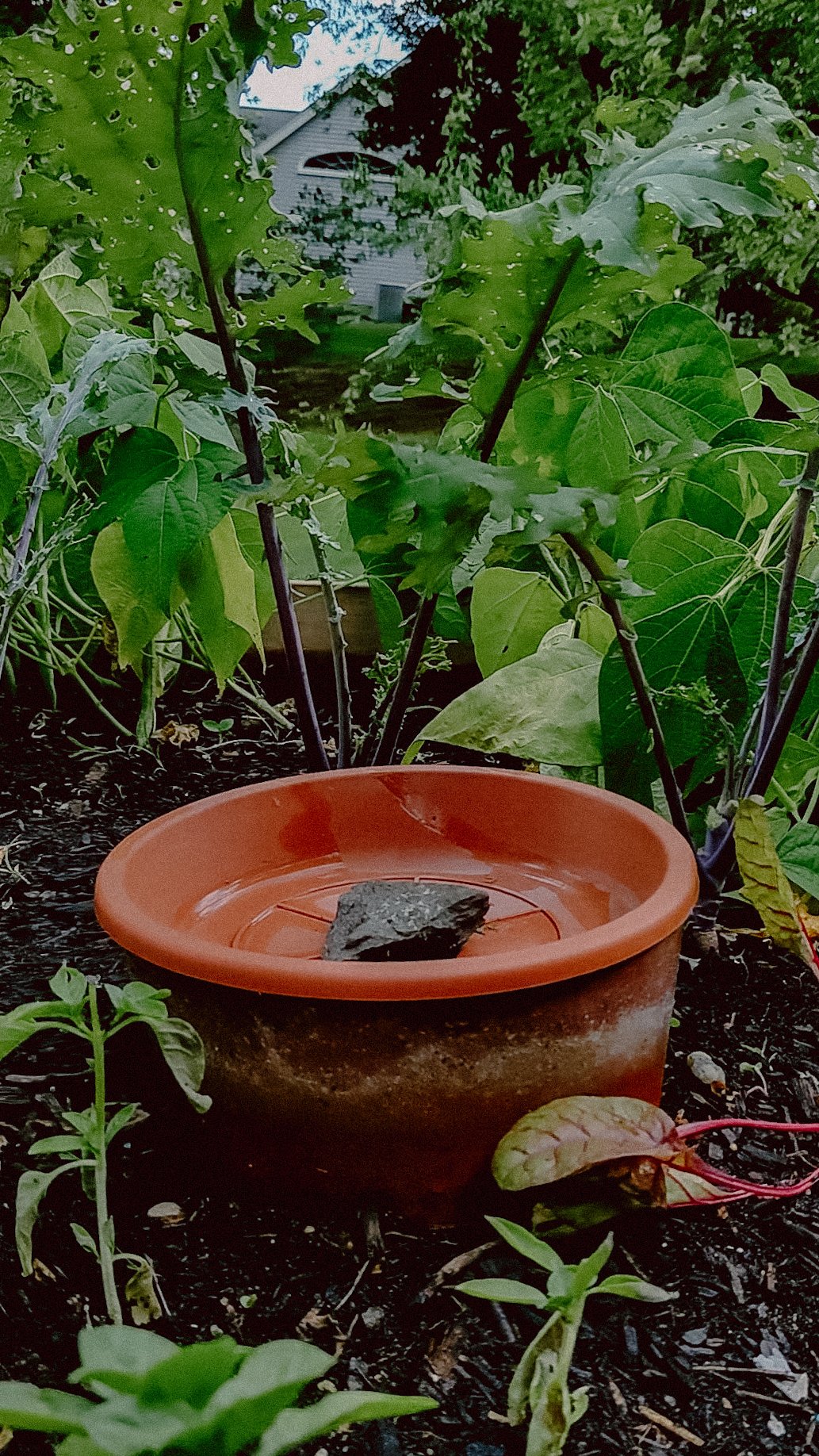Olla Pots and Companion Planting: Creating a Symbiotic Garden
The Cottage Peach is reader-supported. When you purchase through links on our site, we may earn an affiliate commission at no additional cost to you. All opinions are our own.
I'll be the first to admit it: I'm a lazy gardener. If there's an easier way to do something so I can spend more time enjoying my plants and less time worrying about whether they have what they need, I'm going to do it! Combining olla watering systems with companion planting techniques could be all you need to create a thriving pest free and low maintenance garden this summer, no chemicals needed. Ollas, with their efficient and targeted water delivery, can play a key role in fostering a thriving and balanced garden ecosystem. They also eliminate the stress of inconsistent watering that can make them an easier target when pests do arrive. Stronger plants can combat those pests more easily, so by combining the two methods, you can create mutually beneficial relationships between plants, leading to healthier growth, increased yields, and natural pest control.
What is Companion Planting?
Companion planting is the practice of planting different crops in close proximity to each other to take advantage of their complementary characteristics. Basically, every veggie plant has a bestie (or a few!) that help it thrive. They're usually flowers or herbs. Some plants deter pests from their neighbors, while others attract beneficial insects that prey on those pests. Some plants provide shade or support for others, while others improve soil fertility or enhance the flavor of their companions. It really is amazing to see it in action, because it essentially creates a fully functioning natural ecosystem working with nature instead of against it, while also allowing for some really beautiful color and texture combinations that make gardens look more lush and full. Once I started including companion planting in my garden layout designs, I noticed I spent way less time hand picking munching bugs off my leaves and stressing over small harvests. It really goes to show that nature knows best!
Choosing the Right Plant Pairings for Your Olla Garden
The key to successful companion planting is choosing the right plant combinations. Some popular examples include:
Tomatoes and Basil: Basil repels pests that attack tomatoes and is said to enhance the flavor of the fruit.
Corn, Beans, and Squash: The "Three Sisters" of Native American agriculture support each other. Corn provides a stalk for beans to climb, beans fix nitrogen in the soil, and squash leaves shade the ground, suppressing weeds and conserving moisture.
Carrots and Onions: Carrots deter onion flies, while onions repel carrot root flies.
There's an endless variety of companion plant combinations that not only serve a purpose, but look totally beautiful at the same time. I always include flowers like nasturtiums and marigolds in my garden beds, because they are so multi-purpose - not only are they edible in and of themselves, they repel a wide variety of common garden pests that like to make your garden home and serve as trap crops to distract pests from the plants you don't want them to eat. And who doesn't love a little pop of floral in their summer garden salad? If you're new to companion planting, simply adding more flowers like these is a great way to start getting comfortable with the method and attract beneficial pollinators at the same time.
Olla Placement for Optimal Companion Planting
The strategic placement of your olla pots can maximize the benefits of companion planting. It's a good idea to place your plants that reqiure the most moisture closest to the olla - so for example, keeping your tomatoes in the inner ring of the ollas reach since they are high-moisture (or juicy!) plants, and placing the more Mediterranean crops such as herbs that like soil to be a little drier on the outside edges.
Additional Benefits of Combining Olla Watering and Companion Planting
In addition to promoting plant health and natural pest control, combining olla watering and companion planting can also help to conserve water, since ollas deliver water directly to the roots of plants, reducing water waste from evaporation and runoff. And, by encouraging a diverse range of plants, companion planting can improve soil fertility and structure. A diverse garden ecosystem is more resilient to pests and diseases. Companion planting can create a visually appealing and productive garden.
WHAT IS AN OLLA WATERING SYSTEM?
Olla (pronounced oya) means “pot” in Spanish, but the concept of using ollas as an irrigation system goes back thousands of years and has been used in countless cultures around the world. An olla watering system is basically an unglazed eight to ten inch terracotta pot that is buried beneath the soil with only a small amount sticking up above the surface and filled with water. The water then leeches out of tiny holes or “pores” in the unglazed clay and is pulled through the soil to the roots of your thirsty plants using a process called soil moisture tension. This functions much the same way as osmosis, in that the water is trying to equalize to a certain level of moisture within the soil. This means your soil will never become overwatered either - if the soil is moist, the water stays in the pot until it is needed. The downsides of DIYing a system like this are that it can be hard to identify true terracotta - and other types of clays have different properties that make them not as well suited for this job. Plus, you have to fill each one manually every 2-5 days depending on how hot it is and most importantly they take up a lot of room in the garden beds. But thankfully, with the Thirsty Earth system all of those cons are eliminated.
WHY SHOULD YOU USE A Thirsty Earth OLLA WATERING System?
Hauling around a watering can and standing with a hose for 45 minutes isn't exactly a walk in the park for everyone, especially folks like me with arthritis. This past spring, I was right in the middle of a flare-up when I planted my garden. I knew I needed a way to water my plants without turning myself into a pretzel!
Imagine this: you water your plants, but most of the water just sits on top and bakes away in the sun. olla watering systems stop that waste! The water seeps out of the pot slowly, right where your plants need it most - at their roots. This fancy trick can slash your water use by up to 61%. Less water wasted means a lighter water bill and a happier planet.
Olla watering systems aren't just about saving water, they're also all about growing healthy plants! Since the water seeps out underground, plant roots stretch out searching for that moisture. This makes them stronger and helps your plants stand tall. Olla watering systems also keep the leaves of your plants dry, making it harder for fungus and disease to spread. And the slow release of water means your plants get the perfect amount to drink, never too much.
Basically, olla watering systems create happy, healthy plants that can take on anything. But, each olla can only cover an area of about 2 feet all around it (depending on the system you use, but this is true for the ThirstyEarth ollas). So depending on the size and shape of your garden, you'll need to keep this in mind when choosing your olla placement.
Thirsty Earth Olla Watering System Review
Since it can be hard to find genuine terracotta pots affordably in your area, and they take up a lot of space in the garden, the Thirsty Earth olla watering system can be a good compromise that allows you to actually hook up your ollas to an automatic rainwater harvesting system that will continuously refill your ollas for you on it’s own from free rainwater collected from your roof. Plus they are about the size of a water bottle, so they don’t waste precious planting space. I added the Thirsty Earth system to two of my raised beds, and since the system is super easy to customize to whatever garden bed configuration you have, you don’t have to worry about not having the right parts or enough pieces to get it done. The website does a great job of showing you exactly how to lay out the cotta cups and it’s made an already pretty hands-off system completely self-sustaining; water is collected from my roof into a 50 gallon barrel, flows automatically into reservoirs and down the irrigation tube into individual terracotta cups. Setup is easy thanks to the push to connect fittings that come with every kit. You just lay out your cups, cut the included tubing to size and connect everything with the fittings. No need to understand plumbing or any special building skills and you won't need any special tools either. Once everything is set up, you can leave it all summer and the reservoir will refill automatically from your rain barrel or you can manually refill it about once a week. I know it sounds too good to be true, but it really is that easy.
Other posts in this olla watering system series:
DIY OLLA WATERING SYSTEM INSTRUCTIONS
OLLA POTS FOR CONTAINER GARDENING
TROUBLESHOOTING OLLA POT PROBLEMS



